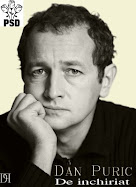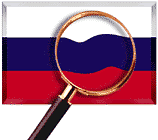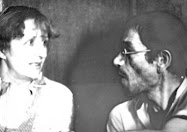
 U.S. Air Force Study Proposed 2009 Influenza Pandemic in 1996
U.S. Air Force Study Proposed 2009 Influenza Pandemic in 1996 On June 17, 1996, the U.S. Air Force released Air Force 2025, “a study designed to comply with a directive from the chief of staff of the Air Force to examine the concepts, capabilities, and technologies the United States will require to remain the dominant air and space force in the future.” In the unclassified study, the College of Aerospace Doctrine, Research, and Education at Maxwell Air Force Base in Alabama posed several “fictional representations of future situations/scenarios” likely to arise.
In 2009, according to a figure in the Air Force 2025 report, influenza kills 30 million people.
In Chapter 5 (vezi mai jos), the authors present a timeline figure representing “plausible history.” In 2009, according to the figure, influenza will kill 30 million people. “A similar influenza pandemic occurred in the past,” a footnote explains, making a reference to the influenza epidemic of 1918 and 1919, described as “one of the worst human catastrophes on record. It has been estimated that more than 20 million people around the world died during the epidemic, and of the 20 million people who suffered from the illness in the United States, approximately 850,000 died.”
“The influenza virus is unique among viruses in being able to undergo so much antigenic change that an antigenically novel virus can sweep around the world in a year or two, giving rise to significant morbidity and mortality,” another footnote states.
It is interesting to note that the source of the Air Force’s fictional pandemic is described as unknown and it is not “determined if the virus was a natural mutation or bioengineered. Many feared the latter.” (Emphasis added.)
Is it merely a coincidence the Pentagon would propose in 1996 a deadly flu pandemic for 2009 when live H5N1 avian flu viruses are discovered in vaccines produced by a Baxter International plant in Austria?
“The fact that Baxter mixed the deadly H5N1 virus with a mix of H3N2 seasonal flu viruses is the smoking gun,” writes Paul Joseph Watson. “The H5N1 virus on its own has killed hundreds of people, but it is less airborne and more restricted in the ease with which it can spread. However, when combined with seasonal flu viruses, which as everyone knows are super-airborne and easily spread, the effect is a potent, super-airborne, super deadly biological weapon” of the sort proposed in Air Force 2025.
Last year, author and researcher F. William Engdahl revealed a Pentagon effort to weaponize avian flu. “If the reports are accurate, this could unleash a new pandemic on the planet that could be more devastating than the 1918 Spanish Flu epidemic which killed an estimated 30 million people worldwide before it eventually died out,” writes Engdahl.
Engdahl then suggests “that sections of the international pharmaceutical industry cartel are acting in concert with the US Government to develop a genetically modified H5N1 virus substance that could unleash a man-made pandemic.” He cites Rima E. Laibow, MD, head of the Natural Solutions Foundation, a citizen watchdog group monitoring the pharmaceutical industry, who states:
Our best intelligence estimate is that pandemic Avian Flu has already been created through genetic engineering in the United States, fusing the deadly genome of the 1918 Pandemic, misnamed the ‘Spanish Flu’, with the DNA of the innocuous H5N1 virus in a growth medium of human kidney cells, according to the National Institutes of Health and the vaccine’s manufacturer. Some virologists believe that this would insure that the man-made mutant virus recognizes human cells and knows how to invade them.
Finally, it should be noted that Walter E. Boomer, a retired former four-star General and Assistant Commandant of the United States Marine Corps, sits on the board of directors of Baxter International. Of course, this is not definitive evidence the military controls Baxter or is behind the “accidental” contamination of H3N2 seasonal flu viruses with the H5N1 virus at its laboratory in Austria. It is highly suspicious, however.
Baxter International has had a relationship with the military since 1941, when its blood-collection devices were the only ones that met the specifications of the U.S. Armed Forces.
Kurt Nimmo, Infowars
Surse: http://www.infowars.com/, http://www.fas.org/spp/military/docops/usaf/2025/index.html, http://www.au.af.mil/au/2025/index2.htm
Digital Cacophony
Figure 5-1. Strategic Planning Space for Digital Cacophony
Technological advances are rampant and the world struggles with rapid change and its effects.1 These tremendous advances in technology have led to the development of many astonishing inventions, such as an individual device that can perform a myriad of simultaneous functions. For instance, a watch phone can be used to conduct video-phone calls and teleconferences;2 monitor a daily schedule, including required tasks and to-do lists;3 display global positioning satellite (GPS) location to include altitude; and even monitor aerobic conditioning, energy, nutrition rates, emotional state, and the status of artificial organs.4 However, many traditional customs and events have faded away, erased by the extreme rate of change. Most holidays are overlooked, and Julian dates5 are the norm.
Technological progress has led to adverse effects as well, creating almost as many problems as it has solved.6 For example, technology has produced some harmful physiological side effects for the human body, causing most humans to have at least one transplanted organ by the time they are in their mid-thirties. Fortunately, advances in biotechnology rectify many medical conditions.7 The proliferation of technology has made the world more susceptible to random violence but also has provided the means to avoid some threats. For instance, since technology provides virtual experiences better than anything live, and large crowds present a target of opportunity to terrorists and disgruntled groups, nearly all sporting events, plays, shows, and theater events are "experienced" at home.8
This world is entitled Digital Cacophony, due to its often discordant nature. Of the six alternate futures, this world is by far the most advanced in DTeK and offers the greatest promise of wealth and power for the individual. On the other hand, it is also the most dangerous for both individuals and states. Figure 5-1 illustrates Digital Cacophony's position in the strategic planning space.
In this world, technology has empowered many individuals, but at the same time disenfranchised numerous governments and organizations. Due to the Exponentialn proliferation of DTeK, everyone has instant access to global networking and the burgeoning, almost omniscient, database system.9 Unparalleled DTeK development has sparked explosive economic growth across the planet. However, those who do not fully share in the wealth of these ventures use technology to terrorize the elites, using weapons of both an insidious and overt nature. Nation-states have lost vitality as independent entities since information and wealth cross international boundaries with impunity.10 Electronic democracies are the political system of choice, with everyone having a direct vote on every issue.11 This creates "fuzzy states" with shifting policies at times. Life in this world is full of promise . . . but this is also a world of fear.
Plausible History
In the world of Digital Cacophony, technology brings people together, but also tears them apart. As seen in figure 5-2, the year 2000 was a benchmark in many ways. For the first time, the world was "wired," and anyone could gain access to worldwide information.12 This development exacerbated social unrest globally as have-nots learned how little they had compared to the well off.13 Meanwhile, nuclear proliferation continued unabated, spreading to 20 states.14 International politics, overwhelmed by transparent information borders, could not control the spread of nuclear technology and materials.15 By 2002, ever-increasing technological breakthroughs in the genetic engineering of plants and animals led to an abundant food production capability,16 spurring population growth as a result of declining mortality rates in third world countries which previously suffered recurring famine.
Technology could not solve some old problems, as in 2009, when an influenza pandemic struck in southern China, then rapidly spread worldwide.17 Three hundred-thirty million people were affected and over thirty million died.18 No one ever determined if the virus was a natural mutation or bioengineered.19 Many feared the latter.
The threatened migration of unemployed masses from second- and third-world countries continued to challenge the few wealthy states. By 2010 the United Nations dissolved due to its inability to resolve these issues and regional conflicts.20 In the resulting vacuum, bilateral and multilateral security arrangements between nation-states and interest groups flourished.
In 2012, Wall Street was hit with a super high energy radio frequency (HERF) wave, which destroyed all financial databases.21 Since advanced information warfare capability was available worldwide, a number of competitor states were investigated, but tracing the source was impossible. The US economy was in turmoil for weeks during database reconstruction, and businesses demanded federal action to prevent further attacks.22
By 2015, 48 actors had acquired several classes of weapons of mass destruction and the accompanying delivery systems.23 Threats of conflicts involving nuclear, chemical, biological, and information weapons became common. During the North African territorial war, a tactical nuclear detonation killed thousands of people.24
The world began an expansion into new frontiers by 2020. Space travel with accompanying outposts became common, and many multinational corporations established production facilities in space to exploit the solar system's resources.25 However, space assets also became a target and required heavy protection.26 Underwater settlements were also prototyped during the early 2020s to support mining operations of hydrothermal vents.27
Many challenges face this world in 2025. Almost any individual or group can acquire weapons of mass destruction or disruption, and threats are one of the few constant things in this world.
The Nature of Actors
The ubiquity of information and the affordable nature of high technology have led to a dispersal of power in this world. Nation-states have become less important, while individuals and small groups can now have tremendous impact on world events. Everyone communicates via the global net, even using it to do all their shopping by electronically hopping around the globe. Individuals can live in one country and work for an MNC in another country "on-line."28
Continuous terrorist threats have caused an ever-present fear, and individuals prefer not to leave the security of their dwelling, let alone meet in large groups. Seemingly, only those individuals who are either overtly adventurous or covertly claustrophobic join organizations such as the active military, which entails much travel and danger. Others interested in serving do so on-line in the reserves.
In Digital Cacophony, individuals demand direct input regarding political decisions, and the government has become a virtual location, or fuzzy state, rather than being confined to capitals such as Washington, D.C. Most democratic countries now operate on versions of the "netocracy," or electronic democracy standard. This system allows constituents to voice their opinion and vote on every issue. The netocracy antiquated the traditional three-party political system and relies solely on electronic interaction.
MNCs also gain influence, profiting from the proliferation in commercially derived, advanced technology. Nation-states cannot control the transfer of wealth and information among internal and external groups, and as a result, state sovereignty declines.29 However, people still look to their national government and military to provide national security and ensure conditions conducive to economic prosperity.30
Technological progress has led to adverse effects as well, creating almost as many problems as it has solved.6 For example, technology has produced some harmful physiological side effects for the human body, causing most humans to have at least one transplanted organ by the time they are in their mid-thirties. Fortunately, advances in biotechnology rectify many medical conditions.7 The proliferation of technology has made the world more susceptible to random violence but also has provided the means to avoid some threats. For instance, since technology provides virtual experiences better than anything live, and large crowds present a target of opportunity to terrorists and disgruntled groups, nearly all sporting events, plays, shows, and theater events are "experienced" at home.8
This world is entitled Digital Cacophony, due to its often discordant nature. Of the six alternate futures, this world is by far the most advanced in DTeK and offers the greatest promise of wealth and power for the individual. On the other hand, it is also the most dangerous for both individuals and states. Figure 5-1 illustrates Digital Cacophony's position in the strategic planning space.
In this world, technology has empowered many individuals, but at the same time disenfranchised numerous governments and organizations. Due to the Exponentialn proliferation of DTeK, everyone has instant access to global networking and the burgeoning, almost omniscient, database system.9 Unparalleled DTeK development has sparked explosive economic growth across the planet. However, those who do not fully share in the wealth of these ventures use technology to terrorize the elites, using weapons of both an insidious and overt nature. Nation-states have lost vitality as independent entities since information and wealth cross international boundaries with impunity.10 Electronic democracies are the political system of choice, with everyone having a direct vote on every issue.11 This creates "fuzzy states" with shifting policies at times. Life in this world is full of promise . . . but this is also a world of fear.
Plausible History
In the world of Digital Cacophony, technology brings people together, but also tears them apart. As seen in figure 5-2, the year 2000 was a benchmark in many ways. For the first time, the world was "wired," and anyone could gain access to worldwide information.12 This development exacerbated social unrest globally as have-nots learned how little they had compared to the well off.13 Meanwhile, nuclear proliferation continued unabated, spreading to 20 states.14 International politics, overwhelmed by transparent information borders, could not control the spread of nuclear technology and materials.15 By 2002, ever-increasing technological breakthroughs in the genetic engineering of plants and animals led to an abundant food production capability,16 spurring population growth as a result of declining mortality rates in third world countries which previously suffered recurring famine.
Technology could not solve some old problems, as in 2009, when an influenza pandemic struck in southern China, then rapidly spread worldwide.17 Three hundred-thirty million people were affected and over thirty million died.18 No one ever determined if the virus was a natural mutation or bioengineered.19 Many feared the latter.
The threatened migration of unemployed masses from second- and third-world countries continued to challenge the few wealthy states. By 2010 the United Nations dissolved due to its inability to resolve these issues and regional conflicts.20 In the resulting vacuum, bilateral and multilateral security arrangements between nation-states and interest groups flourished.
In 2012, Wall Street was hit with a super high energy radio frequency (HERF) wave, which destroyed all financial databases.21 Since advanced information warfare capability was available worldwide, a number of competitor states were investigated, but tracing the source was impossible. The US economy was in turmoil for weeks during database reconstruction, and businesses demanded federal action to prevent further attacks.22
By 2015, 48 actors had acquired several classes of weapons of mass destruction and the accompanying delivery systems.23 Threats of conflicts involving nuclear, chemical, biological, and information weapons became common. During the North African territorial war, a tactical nuclear detonation killed thousands of people.24
The world began an expansion into new frontiers by 2020. Space travel with accompanying outposts became common, and many multinational corporations established production facilities in space to exploit the solar system's resources.25 However, space assets also became a target and required heavy protection.26 Underwater settlements were also prototyped during the early 2020s to support mining operations of hydrothermal vents.27
Many challenges face this world in 2025. Almost any individual or group can acquire weapons of mass destruction or disruption, and threats are one of the few constant things in this world.
The Nature of Actors
The ubiquity of information and the affordable nature of high technology have led to a dispersal of power in this world. Nation-states have become less important, while individuals and small groups can now have tremendous impact on world events. Everyone communicates via the global net, even using it to do all their shopping by electronically hopping around the globe. Individuals can live in one country and work for an MNC in another country "on-line."28
Continuous terrorist threats have caused an ever-present fear, and individuals prefer not to leave the security of their dwelling, let alone meet in large groups. Seemingly, only those individuals who are either overtly adventurous or covertly claustrophobic join organizations such as the active military, which entails much travel and danger. Others interested in serving do so on-line in the reserves.
In Digital Cacophony, individuals demand direct input regarding political decisions, and the government has become a virtual location, or fuzzy state, rather than being confined to capitals such as Washington, D.C. Most democratic countries now operate on versions of the "netocracy," or electronic democracy standard. This system allows constituents to voice their opinion and vote on every issue. The netocracy antiquated the traditional three-party political system and relies solely on electronic interaction.
MNCs also gain influence, profiting from the proliferation in commercially derived, advanced technology. Nation-states cannot control the transfer of wealth and information among internal and external groups, and as a result, state sovereignty declines.29 However, people still look to their national government and military to provide national security and ensure conditions conducive to economic prosperity.30
Nature of International Politics
Global instability increases as the threat of WMD holds under-protected information systems and populations at risk.31 However, nuclear WMD are not the primary problem in Digital Cacophony. The primary problems are the traditional "poor man's nuclear weapons," chemical and biological toxins, which are readily produced in this world. Information nets are also vulnerable to weapons of mass disruption (sometimes called WMd).
Cross-linked alliances, nation-state combines, religious factions, MNCs, or other actors multiply in an attempt to enhance security against numerous threats. Paradoxically, these multilayered links combine with economic interdependencies to create complex and unexpected interactions with outcomes no one can predict, effectively making the world more dangerous.32 The growing power of individuals and groups (reflecting the dispersal of power in Digital Cacophony), along with increasing population pressures, increases the number of conflicts. Every minor conflict has the potential to explode into a major regional war with the use of WMD and information disruption weapons. Millions have already died as a consequence of biological and chemical attacks.
The roles of governmental and nongovernmental organizations are constantly changing, and their power has decreased drastically. As governments focus on regional and global conflicts, nongovernmental organizations (NGO) must increase their role in disaster relief operations. The UN disintegrated due to its inability to resolve massive immigration attempts and numerous regional and global conflicts.33 There is no nation-state left with the power to control world events, leaving bilateral and multilateral security arrangements which shift constantly as actors try to keep pace with changing threats. NATO still exists, but has become trivial, relegated primarily to the role of a legal secretary between countries negotiating security arrangements.
The Nature of US National Security Strategy
The US national security strategy in Digital Cacophony is two-fold, first to deter and defend against hostile actions against US citizens, companies, and property, to include the use of WMD; and second, to ensure open electronic information flows. Most Americans have strong ties and interests around the globe via information networks. These interests are often targeted by terrorists; and US citizens feel the military should protect these interests, whether they be goods, services, equipment, territory, or personnel. The military is equipped to meet all known contingencies at any location worldwide. They are directed to deter WMD through aggressive counterdetection, counterterrorism, and counterproliferation strategies.34 The national security strategy also addresses the enforcement of free and open electronic trade throughout all nations and groups. The military is well trained and specially equipped for this mission and constantly monitors nearly all information networks.
The Nature of Humanity
In this world, individuals can hold great power and are able to affect the outcome of a great many things. However, they are only independent as a single entity on the internet, as they are totally reliant on the net to function. Despite the allure of the electronic faux-life, a common dream is to "unplug" and be left alone for awhile . . . but the thought of missing the latest info-update is too enervating. Psychologists have categorized this neurosis as "infolepsis," a condition of frequent and uncontrollable desire for information.35 People communicate freely on the net, but many have also become isolationists, unable to communicate face-to-face. The net has become the center of people's existence. "Net-vangelism," or internet evangelism, has become a dominant form of persuasion, competing equally with other media forms. It is often used to sway public opinion regarding proposed government policies.
Due to the rapidly changing political and technological environment, most people suffer from high levels of anxiety. Many cannot cope or are uncomfortable with Exponentialn change and its apparently unknowable impacts. Sometimes even those comfortable with technology find themselves temporarily on the outside looking in. For example, disgruntled software engineers who are replaced by artificial intelligence are able to temporarily disrupt portions of the information net, causing havoc in the transportation network.36
The Nature of Technology
Exponentialn DTeK is the key driver in this world, accelerating beyond the control of world actors. Technological advances often result in unintended consequences, such as ready access to weapons of mass disruption. In a society dependent on the global network, a disruption to that service is often more damaging than a physical attack.37
Information is a prized commodity, often used to barter, as normal power structures have become diluted. In particular, the filtering and sifting of information becomes the focus of almost every organization and individual.38 Information equals power and control, but the main information challenge is sifting through databases to clear contaminants and waste by-products, such as unwanted and unneeded information. Personalized, self-adapting information filters are at the forefront of market demand. Filters also guard against "cyberagents," who prowl the net. Cyberagents infiltrate deep into cyberspace to detect, alter, steal, and destroy information filters and files. Since filters cannot protect against, nor detect, all "tainted" or false information, individuals have lost confidence in the information they are receiving.39
Customers force innovations in a bottom-up research and development era, and companies must remain adept at satisfying individual customer needs. Some of the most significant advances have been in the medical field.40 For example, most known diseases are detected and treated at birth; anti-aging products and services ensure a life expectancy exceeding 100 years of age; and genetic mapping allows researchers to examine the underlying causes of disease.41 Organ replacements are now performed as outpatient surgery, with a seven-to-ten day recovery time. Limb replacement patients complete rehabilitation in four to six weeks. These and other medical advances help sustain a high military operations tempo, as damaged soldiers can often be healed and recycled to the zone of operations in days. Nonmedical advances include the development of new super materials designed at the molecular level,42 miniaturization of most hardware devices,43 and robots for most domestic and manufacturing tasks.44 The military relies heavily on advances in civilian technologies rather than funding their own niche research,45 and quickly adapts and incorporates any new technology to keep ahead of the competition.
Since personal residences are the focus of all day-to-day activities, most services are provided directly to the home. For instance, quality primary and secondary education is available on the net.46 This "democratization" of education has brought the world computer literacy rate to over 90 percent, and most individuals have college-equivalent degrees. Because interconnectivity is total and virtual, information technology is used for more than just power; it is also used for pleasure and intellectual fulfillment. For example, due to personal safety concerns, the majority use "sensurround systems" to enjoy sporting activities, or take vacations in the safety and comfort of their biologically filtered domicile. Sensurround is a series of biochemical and electronic systems providing a total virtual firsthand experience, more stimulating than life itself. Sensors are strapped onto the body and one can actually feel what is happening on the sport fields or while skiing the Alps, switching "locations" at a whim.
The Nature of the Environment
The rampant nature of DTeK leads to unintended chaotic effects in Digital Cacophony. A major concern is managing the unanticipated outgrowth of problems and unforeseen vectors spun off by the rapid and revolutionary leaps in technology. Consequently, this world is characterized as a "256-color" world; parts are green, parts are brown, and other "colors" just splash across the canvas. There are too many colors, and most are artificial. Also, everyone has a voice in this world, and it is difficult to find peace and quiet with those voices coming at you from every direction.
Unanticipated problems are an unfortunate outgrowth from this world, and controls are often not established in a timely manner commensurate with the dangers of technological developments. For instance, easy access to technology and materials caused a rapid spread of WMD. Another unintended consequence was when biogenetic diseases, developed for military and commercial use, escaped to the open environment. Information weapons of mass disruption also exist, and filter industries must devote ever greater resources to the problem of viruses that have escaped from information warfare centers.47 Some viruses evolve and are rarely detectable, existing as "stealth" viruses of unknown motivation, origin, or destination.48
The terrorist threat has reversed the trend toward urbanization as people have scattered across the globe. Technology makes living just about anywhere feasible. Many live underground for additional protection and environmental aesthetics. Underwater settlements are beginning to flourish in support of the various mining operations and food production sites.49
Technology has made great leaps in the day-to-day care of the environment. All trash is recycled and industrial waste has almost been eliminated.50 Water is also recycled worldwide,51 while air and water filters keep home dwellings safe. People and animals suffer from organ failure due to the extreme electromagnetic radiation from the numerous electronic devices,52 but medical advances have made this problem treatable. Energy resources are plentiful, with substantial reliance on renewable resources such as wind, solar,53 tidal, and wave energy,54 as well as the expanded use of nuclear fusion.55
The Nature of the Defense Budget
Technological advances have accelerated the growth of gross domestic products worldwide. For instance, the US GDP has risen an average of 6 percent annually over the past 30 years to $39 trillion.56 Accordingly, the federal budget has easily been able to withstand a rise in defense spending to more than $300 billion in 1995 dollars (see fig. 5-3), an amount that represents less than 1 percent of American GDP. Military budgets-particularly for modernization, which is now 60 percent of the total DOD budget-rise in an attempt to stay apace with threats. Obsolescence is a recurrent problem, and some systems' lifespans are measured in months or less. Though the defense budget has increased, serious threats from all directions, because of ready access to WMD and information disruption systems, reduce the overall security of US citizens.
Figure 5-3. DOD Budget (Constant FY95 $B) for Digital Cacophony
Capabilities
America's global world view supports a technically proficient military, able to inject itself into surface, spatial, and virtual operating environments. The US has chosen to be involved globally because the fuzzy state has, in a sense, formed a fluid continuum seeping into all of the world's nooks and crannies. The US perceives this continuum as a global neighborhood sharing one backyard,57 one that must be made safe to preventcrises from propagating in unforeseen ways. To protect this backyard,forces must be adept at fighting in conventional, unconventional, andinfo-war environments. They must exploit advanced detection capabilitiesto locate and disarm both physical and virtual weapons. Fortunately, asmall engagement force is generally sufficient to deter or resolve mostsituations. These small teams exhibit specialized training, with eachindividual proficient in tasks ranging from hostage negotiations tonuclear weapon disarmament. Multifunctional equipment, easily adaptableto varied environmental conditions, is also required. Advancereconnaissance, detection, and communication assets are key to directingboth teams and equipment.Two other areas of primary concern for the military are modernizationand defense. Modernization is never-ending in the face of proliferationof technology, and intense training is required to maintain forces at ahigh state of readiness.58 Physical and virtual defenses are everywhere.
Implications
In Digital Cacophony, DTeK's Exponentialn growth has contributed to an unstable world, domestically and internationally. The proliferation of mass destruction and disruption weapons keeps the world on edge. As fears in the US escalate, individuals turn to the netocracy in dictating what military action they want accomplished. At times it is not clear who the enemy is with the rapid shifting of coalitions. Historical allies become foes and foes become allies as technology quickly determines who is currently leading the technology race and receiving the profits.
Four main concerns impact the day-to-day operations of the military: time, modernization, training, and burnout. Time is of the essence as every conflict, no matter its initial scope, has the capacity to explode into regional or global war. The decision cycle is compressed into hours, vice days or weeks. To remain ready, the military maintains worldwide vigilance. The pace of modernization is driven by the need to stay ahead in fielding the latest weapon or countermeasure. Unfortunately, the pace of modernization makes it difficult to keep personnel trained in the latest techniques and equipment. A combination of extremely high operations and training tempo causes rapid burnout of most front-line military forces. Most remain in the field only 5 to 10 years. A key challenge is the task of balancing this burnout with the need to retain individuals with "live" experience.
Information-age advances have greatly benefited certain aspects of the military. Since many military missions can be performed "over the net," many serve "on-line." All headquarters and command functions are performed on-line from dispersed locations to reduce vulnerability and increase efficiency. Many nonmobile functions, such as acquisition, supply, and most logistics, are transitioned to the reserves. All officer and enlisted professional military education and advanced technical training is individualized, and most student interaction is conducted via virtual videoconferencing seminars.
Summary
Digital Cacophony is a world racing to keep pace with the rampant speed of technological change. This condition results from the effects of DTeK being at the extreme Exponentialn dimension. The power grid in this world has become Dispersed, and no one actor or government can control the free-flowing information across boundaries. The American world view is Global due to the numerous threats facing the country and world. The US realizes it is part of the "global village" and must be involved worldwide to guarantee long-term security.

































































1 comment:
Vezi si AICI: http://turnerradionetwork.blogspot.com/2009/04/prepare-to-die-its-been-planned-and-has-begun
Post a Comment